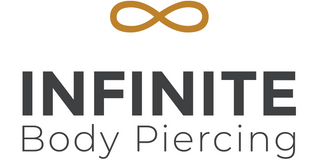There is a history of ritual tongue piercing in both Aztec and Mayan cultures, but piercing the tongue to insert permanent ornamentation is a much newer phenomenon. The “modern” tongue piercing—a straight barbell passing through the center of the tongue—did not surface until the 1980s, when Elayne Angel at Gauntlet spearheaded its promotion and popularity.
Tongue piercings are usually done along the center of the tongue, placed approximately where the lingual frenulum (or “tongue webbing”) attaches the tongue to the bottom of the mouth. We don’t advise placing the piercing too close to the tip of the tongue, as this is more likely to cause trouble with speech and damage to the teeth. However, if the tongue is long enough and the webbing underneath isn't too tight, multiple tongue piercings can be done in a straight row. Side-by-side piercings can be done as well, although they can be—pardon the pun—a mouthful. While the piercing itself is not particularly difficult or painful, you should expect a good deal of swelling afterward; you may also find you have a slight lisp and difficulty speaking for the first two to four days, but this is temporary and will improve as the swelling decreases.
Initial jewelry is a straight barbell at least 12 gauge thick and long enough to account for swelling (usually ¾” to ⅞”). Because of this swelling, two different lengths of jewelry are needed: one initially and one to be worn after healing. With our jewelry, both ends unscrew from the center post, making changing jewelry easy (and inexpensive), as you only need to buy a new, shorter center post, and not an entirely new piece of jewelry. Likewise, you can purchase different ends for the top (and/or bottom) to add a bit of pizazz to your piercing.
Much has been made of the risk of damage to the gums and teeth from oral piercings, and tongue piercings in particular. (The American Dental Association officially came out in opposition to this practice in 1998.) While these risks are present and should be considered, the best way to minimize these risks is to downsize your piercing after healing—usually at about four weeks. Your teeth will thank you!












